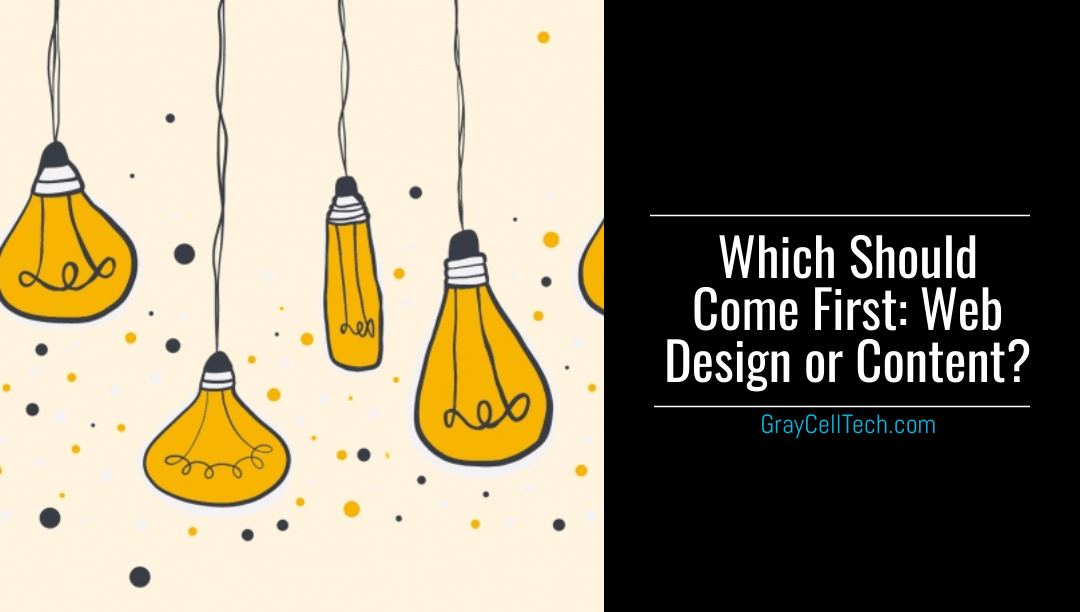Design and content, both are important for a successful website. The website design makes the first impression on the audience so helps to convert your site into a brand. Similarly, the well-crafted content conveys the right message and target the audience to take the action.
In simple words, both complement each other to give high website conversion rates, search engine rankings, and enjoyable user experiences. The question arises here i.e which should be the priority content or design to have a great website? Let’s examine both the approaches- website content-first and design-first to find the answer.
What is the Content-First Approach?

The content-first approach treats the content as a chief component irrespective of its type i.e. landing page content, video, infographics, ebooks, message, articles, case studies, etc. It involves the content from the starting point for the planning, design, and development of a user-centric website. Because ultimately, the content is responsible to stick the user with the website.
In the planning phase, the designer or the product manager plays the role of content strategist by providing a content prototype. A content prototype is a conversational document, full of words to test that is it providing an interface with real customers? The purpose of the content prototype/wireframe is to draft the conversation that we want with the audience. After this, the design comes that makes the conversation clearer and more effective.
There are many benefits of the content-first approach, some of which are as follows:
Benefits of the Content-First Approach
- Gives the overall picture of the design
The content gives context to the design. When the placeholders are put into the design with the dummy Lorem Ipsum content, it loses its real view. In simple words, it just becomes a visual element and misses the valuable information that one can enter or read. Secondly, the number of words of the real content can exceed or remain less than the placeholder text. It will affect the final layout at later stages. So, it’s better to start with real content to give meaning to the overall design to avoid any variation from the style and tone of the website.
- Chart out the user journey efficiently
A user’s journey is the process of interaction with your website to accomplish a task. So, a website should be visually appealing and content-rich to bind the user until he finishes the task. For example- sometimes, a user spends a considerable amount of time browsing on an e-Commerce website but ends up leaving it without adding anything to the cart. Therefore, it will be a blunder to go with the placeholder text. By doing so, one loses a fair chance to engage the user with the company website.
- Helps in effective responsive design
It is easy to map the real content for different screen sizes for the designers than the placeholder text. Because using the Lorem Ipsum in the earlier stages and replacing it with the actual content in the later stages, increases the difficulties for designers. It may lead to scrap down the useful content to match the screen sizes so it would lose its meaning. The designers need not re-structure if using real content that saves both time and effort. Because to make any updation in content, the designer changes the source file or mock-ups, etc.
Points to Remember
There are some important points that one should consider while creating a content-first approach. These will help the content team to work through the challenges of time, budget, and process.
- Flexible approach
A content team should follow a flexible approach to accommodate any changes in the review and proposed design. These can be project timings to handle delay in receiving visual progress or budget to be allotted to the revisions. Similarly, if following an established process, it should be able to withstand the challenges and successes.
- User targeted content
The content-first approach doesn’t mean that the content should be great writing. But, it should at least depict the narrative structure. For the content to be user-targeted, it should be represented by boxes or squiggles without any superfluous editorializing or repetitions. In short, it should be able to pose a story that will guide the users to achieve a specific goal.
Design-First Approach

The design-first approach involves designing the landing/home page, downloadable, or any other visual element of the website with the dummy or placeholder content. It is a viable alternative to the content-first approach. Though the design communicates about your product, yet it merely serves as a decoration if not complemented with the right content.
Problem with the Design-First Approach
By following the design-first approach, one only focuses on the outside appearance of the website. It makes sense when working for a new website from scratch. But in the long run, it creates problems for the designer as they need to replace the dummy content with the ” and make revisions again and again. It will waste both the time & resources and slow down the development process.
Conclusion
All things considered, the content-first or design-first approach is out of the question. Both should go hand-in-hand for the best outcomes. If the content is necessary to shape our message for the audience correctly, the design is the required medium to present it beautifully. If you are also looking for a high-performing website, you can trust GrayCell that has great experience in designing fully-functional, reliable, and scalable websites optimized with relevant content!!








